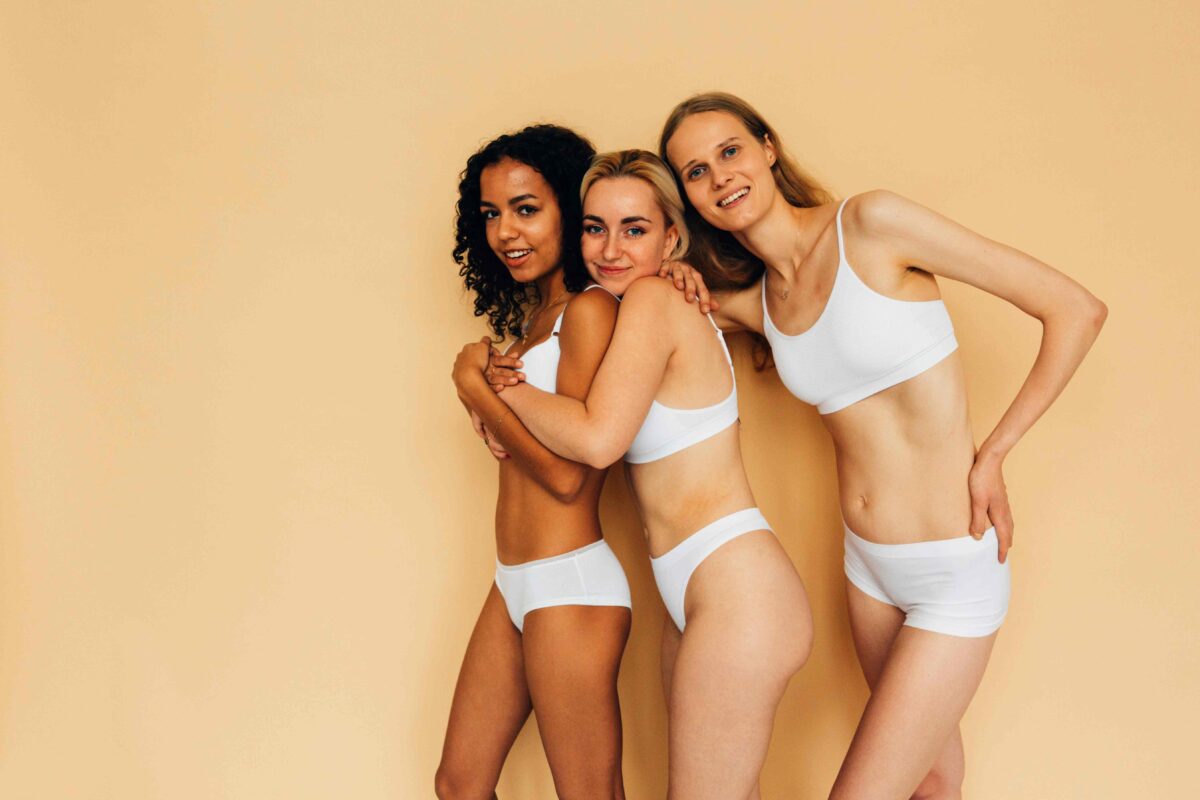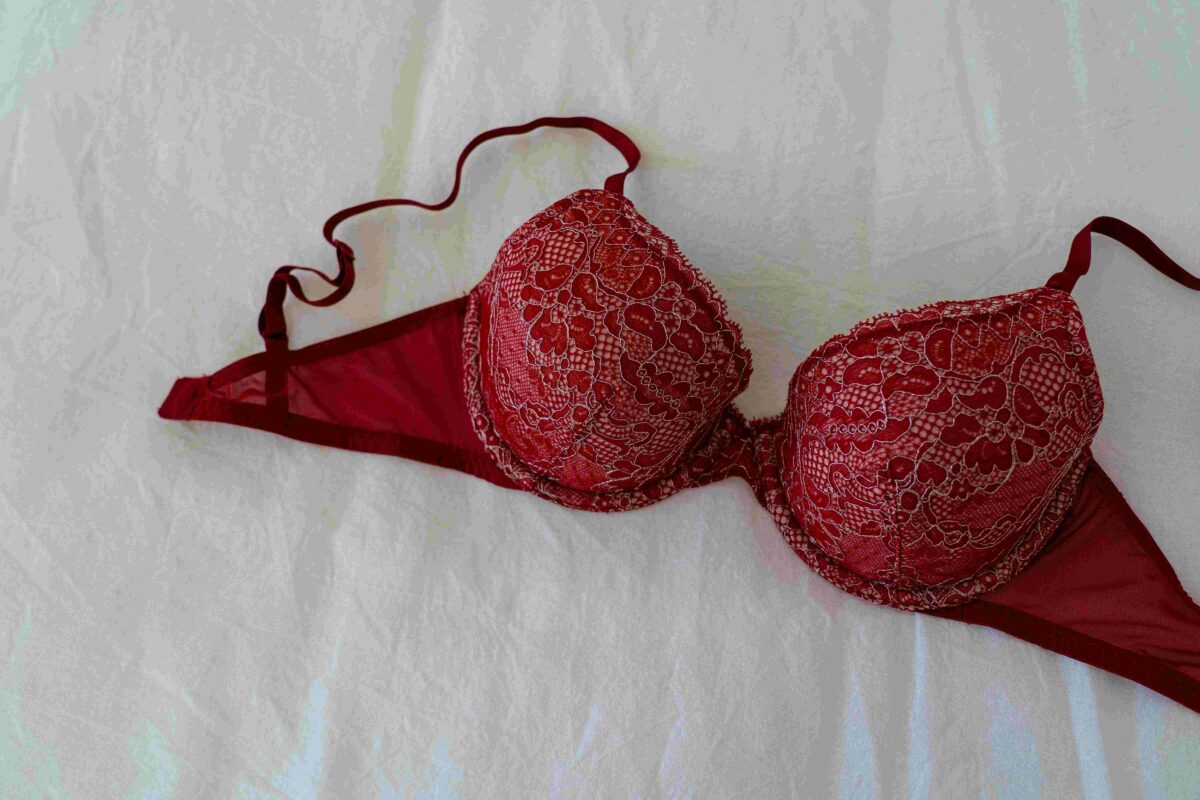The custom lingerie market is evolving rapidly, driven by consumer demand for personalized, high-quality, and unique designs. Whether serving luxury consumers, regular comfort seekers, or eco-friendly fashionistas, companies must choose the appropriate fabrics, designs, and branding colors to produce unique goods.
Comfort, durability, and brand impression all depend on the correct fabric. While modal and microfiber provide all-day comfort with breathability, silk and lace appeal premiumly and sensually. Styles must also fit the target audience—bodysuits for modern fashion statements, shapewear for support, and casual wear blouses. Beyond style and materials, a lingerie brand’s identity is much shaped by branding customizing including embroidery, unique lace patterns, or screen-printed labels.

Understanding how to choose the correct materials, create designs that appeal to consumers, and include successful branding techniques can make all the difference in the lingerie market, when competition is rising. The main components of fabric choice, lingerie design, and customizing processes will be broken out in this book to enable companies produce superior, market-ready personalized underwear.
1. Choosing the Right Fabrics for Custom Lingerie
Custom lingerie depends on the proper fabric since it directly influences comfort, durability, and appearance. Different textiles have special advantages whether the design calls for performance-based shapewear, daily wear, or luxury lingerie. Knowing these elements guarantees that companies adopt solutions fit for their brand image and consumer expectations.
Luxury and Sensory Appeal: Silk & Satin
Luxury underwear is linked with silk and satin. Perfect for high-end intimate apparel, these textiles have a smooth, soft texture that feels amazing on the skin. Naturally moisture-woking and breathable, silk guarantees comfort even in warm environments. Often composed of polyester or silk blends, satin offers a similar look at a less expensive price. Both materials, however, need careful handling and their cost might not be appropriate for mass, reasonably priced manufacture.
Lace & Mesh: Elegance and Breathability
lingerie gains a delicate, feminine touch from lace and mesh textiles. High-end designs frequently feature lace because of its rich appearance and complex patterns; mesh offers a contemporary, airy substitute. For personal wear that strikes a mix of comfort and looks, both materials are great. Their delicate character, meanwhile, makes stronger stitching necessary to improve longevity. Custom-designed lace patterns are a common tool used by brands aiming at the premium lingerie market to establish distinctive styles.
Microfiber & Modal: Everyday Comfort and Softness
Microfiber and modal fabrics give great softness and stretch for daily wear lingerie. Perfect for seamless lingerie, microfiber is lightweight, moisture-wicking, and resistant to piling. An environmentally acceptable substitute for cotton, modal—derived from beech wood pulp—is quite breathable and prized for its velvety texture. For companies trying to provide sensible, cosy underwear with a modern vibe, these materials are great options.
Cotton & Bamboo: Natural and Eco-Friendly Options
Still a first choice for breathable, skin-friendly lingerie is cotton. For consumers that give natural fibers a priority, it is hypoallergenic, robust, and low maintenance. Conversely, bamboo fabric’s softness and antibacterial qualities are driving demand for it in the market of sustainable fashion. Eco-aware companies trying to provide comfortable, daily underwear with an eye toward sustainability will find these textiles perfect.
Custom lingerie’s best fabric will rely on the target market and brand positioning. While comfort-minded collections flourish with modal and microfiber, luxury companies gain from silk and lace. For designs with an eye on sustainability, eco-aware companies can investigate bamboo and organic cotton. Selecting the correct materials will help lingerie companies guarantee that their products are appealing and useful, so enhancing their market position and consumer happiness.
2. Selecting the Best Styles for Your Target Market
Custom lingerie’s success relies on fabric choice as well as on selecting appropriate designs that meet various consumer preferences. Choosing the correct cuts and shapes guarantees a mix of comfort, utility, and aesthetic appeal whether a business specialized in luxury lingerie, shapewear, or daily basics. Knowing consumer tastes and present market trends helps companies design goods that appeal to their target market.
Bras & Bralettes: Functionality vs. Comfort
A mainstay of lingerie, bras provide different degrees of covering, support, and shaping ability. Customers looking for lift and contouring would find traditional underwired bras perfect since they offer great support and structure. For consumers who would rather have a laid-back fit, wireless bralettes appeal since they concentrate on comfort and informal wear. While premium labels concentrate on lace-detailed or silk-lined bras for a luxury feel, brands aiming at younger or minimalist consumers sometimes include soft, seamless bralettes into their ranges.
Panties: Versatility in Design
Different tastes are catered for by the several designs of custom panties. While thongs and Brazilian cuts appeal to consumers looking for minimal lines beneath clothing, bikini and hipster styles provide modest coverage and are therefore popular for daily usage. Especially in shaping lingerie, high-waisted designs have also become rather fashionable since they offer extra support and a retro look. A good bespoke underwear collection depends on providing a selection of designs that fit different body types and tastes.
Loungewear & Sleepwear: Expanding Beyond Traditional Lingerie
To satisfy the increased desire for fashionable but cozy at-home clothing, many lingerie companies are branching out into loungewear and sleepwear. From intimate wear to casual fashion, satin camisoles, lace-trimmed slips, and soft modal nightgowns offer an easy change-of course. Premium and environmentally responsible companies looking to provide elegant, multifarious products outside conventional underwear find great appeal in this sector.
Shapewear: Support and Sculpting
From being just functional, shapewear has become a must-have in contemporary lingerie designs. Targeting support with high-waisted shaping shorts, sculpting bodysuits, and compression slips helps to accentuate body features without compromising comfort. Shapewear is becoming more breathable and lightweight thanks to advances in fabric technology, which appeals to both fashion-forward and utilitarian lingerie companies.
Bodysuits & Corsets: Fashion-Forward Lingerie
Corsets and bodysuits are today fashionable statement items, transcending their original purposes. Wearing lace and mesh bodysuits either inside or outside will provide flexibility to a lingerie line. Once connected with tight shaping, corsets are now attractive to trend-conscious customers because they are reinterpreted with comfortable stretch fabrics and trendy designs.
Custom lingerie’s ideal styles rely on the target demographic of the business and product positioning. While high-end collections benefit from delicate lace, silk, and shaping aspects, daily needs should give comfort with soft fabrics and seamless patterns top priority. Separating into loungewear and shapewear will improve the market reach of a brand even further. Choose the correct designs to ensure that lingerie companies produce visually beautiful and highly useful collections that guarantee long-term client happiness and brand loyalty.

3. Customization Techniques for Lingerie Branding
Beyond color and fabric choice, a unique underwear line from competitors depends much on branding. Good customizing methods improve the character of a brand and guarantee both long-term durability and aesthetic attractiveness. Whether a lingerie business targets premium consumers, regular consumers, or environmentally aware consumers, the appropriate branding strategies can increase its market presence.
Embroidery: A Premium and Timeless Approach
Luxury underwear collections frequently feature high-end customizing done with embroidery. It lets you sew delicate branding—monograms, flower motifs, logos, etc.—straight into lace, satin, or mesh. Unlike printed graphics, needlework gives the fabric texture and depth and lasts. High-end labels sometimes develop distinctive pieces that accentuate uniqueness using delicate embroidered logos or handmade lace designs.
Bold and reasonably priced branding in screen printing
Popular for mass-produced lingerie, screen printing provides vivid and robust graphics. On cotton, modal, and microfiber materials, it performs nicely; brands can add tagless label prints, unique logos, or patterns. For companies making daily wear and loungewear, where strong, obvious branding is crucial, this approach is very helpful.
Heat Transfer: Versatile for Small-Scale Customization
A flexible solution allowing marketers to apply complex graphics and multicoloured logos onto lingerie is heat transfer printing. It performs on polyester, cotton, and mixes among other materials. Although it provides exact detail, with time it could not be as durable as embroidery or screen printing. Limited-edition collections, custom branding, or promotional lingerie sets call for this approach.
Custom Lace and Fabric Patterns: Unique Brand Identity
Custom lace and fabric patterns are frequently investments made by companies seeking a unique character. This lets businesses design special lacework with logos, initials, or distinctive patterns spun right into the cloth. High-end and boutique lingerie companies apply this approach to stand out and create a clear brand identity.
Sustainable and Ethical Labeling: A Growing Trend
Sustainable branding components include organic cotton labels, biodegradable packaging, and recycled fabric prints are becoming more and more popular as customers grow more ecologically concerned. Companies emphasizing environmentally friendly underwear should include these components into their customizing process to fit the values of their target market.
Correct branding strategies improve the image of a lingerie brand and raise product recognition. While screen printing and heat transfer provide reasonably priced branding choices for greater-scale manufacturing, embroidery and handmade lace give a premium touch. High-quality customizing techniques help lingerie companies produce visually striking and commercial collections appealing to their target market.Selecting high-quality materials ensures that your lingerie is both beautiful and functional. Want fabric samples for your custom lingerie line? Request a sample today.
4. How to Ensure Quality and Comfort in Custom Lingerie
Making great custom underwear calls for meticulous attention to craftsmanship, fit, and durability in addition to choosing top fabrics and fashionable designs. Consumers want comfortable, fitting underwear that will hold through several wears and washing. Whether a brand emphasizes luxury, daily needs, or shapewear, guaranteeing exceptional quality control improves client loyalty and satisfaction.
Fabric Testing: Ensuring Softness and Breathability
Any beautiful lingerie item’s foundation is its fabric. Brands should test materials for breathability, elasticity, and softness prior to mass manufacturing. Though lace and mesh should be soft, not scratchy, materials like silk, modal, and microfiber should feel smooth on the skin. Excellent lingerie should also be light enough yet strong enough to preserve integrity and shape over time.
Stitching and Seam Construction: Durability Matters
Well crafted lingerie depends on strong, accurate stitching. Reinforcing seams will help to guarantee that the clothing resists regular use and stop fraying. Flatlock or bonded seams improve longevity and preserve a smooth, irritation-free feel for lace and delicate textiles. Strategic compression panels used in shapewear need strong tensile stitching to support without limiting movement.
Perfecting Fit and Sizing Standards
A lingerie garment that fits improves confidence and comfort. Using thorough measurement charts, flexible materials, and adjustable closures like hook-and- eye fasteners or elastic bands helps custom lingerie businesses guarantee accurate size across several markets. Providing comprehensive size ranges—from small to plus-large—ensures every customer finds their ideal fit and increases market reach.
Durability and Washability: Extending Product Life
Good lingerie should hold its suppleness and structure even after several washings. Test washability to make sure colors don’t fade, lace doesn’t stretch out, and elastic bands stay flexible. Including correct care instructions—such as hand washing for delicate items or machine-wash recommendations—helps consumers maximize the lifetime of their undergarments.
Custom lingerie’s quality and comfort depend on long-term durability, fit accuracy, fabric performance, and sewing perfection. A well-made product improves customer wearing experience as well as brand reputation. By giving these quality criteria top priority, lingerie companies may produce collections combining lifespan, beauty, and utility, therefore building client confidence and recurring business.
5. Bulk Ordering and Supplier Selection for Custom Lingerie
Choosing a Reliable Supplier
Strong suppliers should be experienced in lingerie manufacture, provide knowledge of delicate fabrics, complex stitching, and branding procedures. Seek for companies that offer flexible customizing choices, trial production, and fabric samples. Proven track record in ethical production techniques and quality control helps suppliers assist build the trust of a brand on the market.
Knowing MOQ and Pricing
Fabric type, intricacy, and customizing all affect minimum order quantities (MOQs.). Companies should assess bulk pricing policies to strike a mix between inventory demands and cost-effective policies. Although larger orders sometimes lower per-unit costs, testing samples before scale manufacturing is absolutely vital.
Production Lead Time and Delivery
Custom lingerie calls for exact workmanship, hence manufacturing of it can take more time than of regular clothing. Clear lead time and shipping logistics communication guarantees products arrive on time and helps to avoid delays.
Want help scaling your lingerie business? Contact us for expert advice on sales and distribution.
Final Thoughts
Customizing underwear that satisfies market need and strengthens company identity depends on selecting the correct fabric, style, and branding technique. Choosing the correct material improves both appearance and wearability from opulent silk and complex lace to environmentally friendly bamboo combinations. Careful design decisions that guarantee fit, structure, and customizing possibilities help to further guarantee the lingerie appeals to the desired audience.
Beyond the product itself, working with a reputable manufacturer guarantees scalable bulk ordering choices, consistent quality, and effective manufacturing schedules. Offering premium fabrics, skilled workmanship, and customized branding solutions to help companies realize their own designs, Modenly specializes in high-quality custom lingerie manufacture.
Contact Modenly now to discuss your project and get a tailored quotation if you are seeking for a reliable partner to create personalized lingerie at volume!

